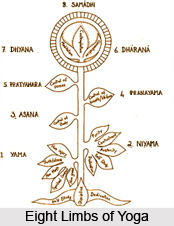 The twentieth yogic sutra explains about the sadhaka, who is able to gauge not only the minds of others, but also, if necessary reach beyond the constraints of a mere mind. A sadhaka, though never wastes time to mind read another individual, always is inclined to those, who are free of every worldly desire or sorrow. He applies more sensitivity to measure the mind of another even more elevated sadhaka.
The twentieth yogic sutra explains about the sadhaka, who is able to gauge not only the minds of others, but also, if necessary reach beyond the constraints of a mere mind. A sadhaka, though never wastes time to mind read another individual, always is inclined to those, who are free of every worldly desire or sorrow. He applies more sensitivity to measure the mind of another even more elevated sadhaka.
na not
ca and
tat that (knowledge)
salambanam support, use
tasya that
avisayi unperceived, beyond the reach of mind, not within the reach of
bhutatvat in life
A yogi who is able to read the minds of others in general, can also, if necessary, exactly identify specific contents which are beyond the reach of the mind.
This sutra is sometimes excluded on the grounds that it is a later addition, the argument being that if, as the previous sutra says, the yogi is able to read minds in general, then the contents of particular minds must be likewise transparent. Some combine sutras 19 and 20 or exclude sutra 20, interpreting it to mean that the yogi`s concentration is only on the idea in another`s mind and not on its supporting object. It is really immaterial. A true yogi, though he possesses the general and specific gifts of mental insight, is unlikely to waste his time looking into other people`s minds and risk losing the grace of yoga, except when he needs an accurate knowledge of another`s motives to know how best to act towards that person. The sadhaka chooses to bend his attention towards those who are free of desire - his master`s mind, for instance, so that his consciousness, by sympathetic attraction, may take on a more graceful disposition.
To weigh the mind of an individual requires more sensitivity than to sense the contents of mass consciousness. Successful politicians are known to be adept at the latter, but the former may be compared to a gallery visitor looking at an abstract painting, who assigns to the artist his own feelings as he tries to understand it. A yogi would be able to pervade the artist`s state of mind, and his precise thoughts and feelings while at work on the canvas.




















